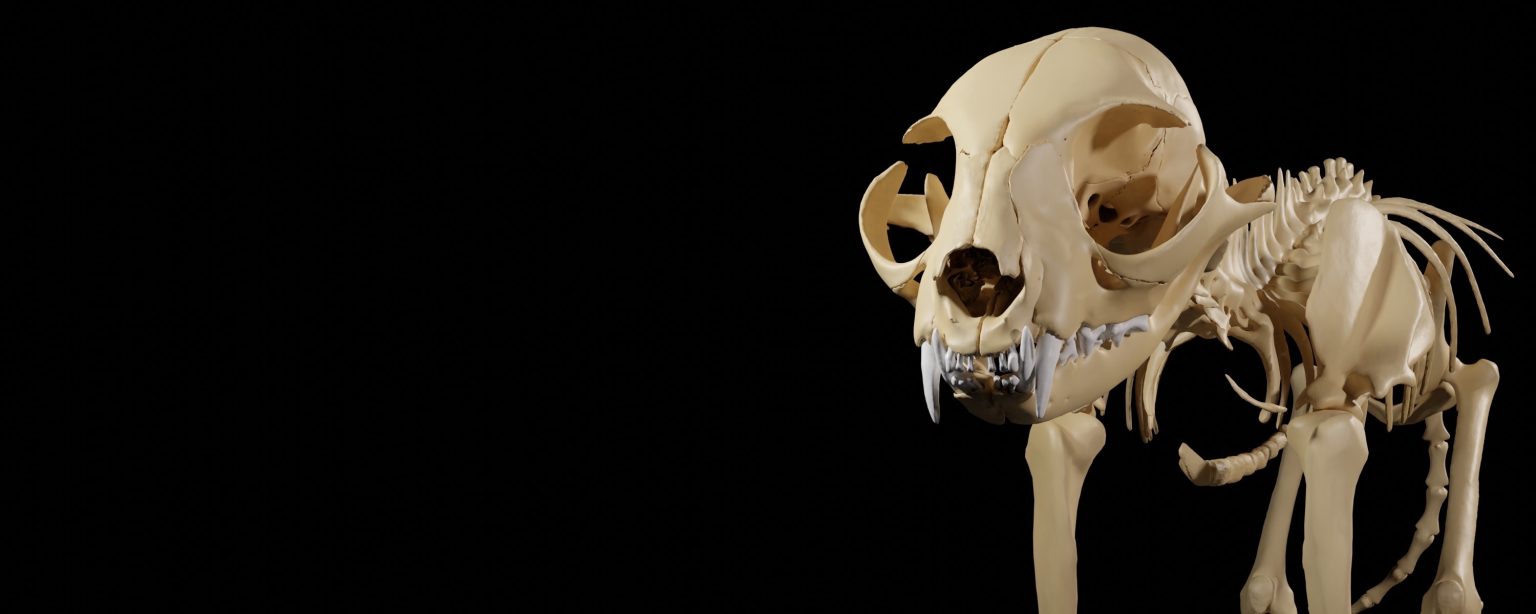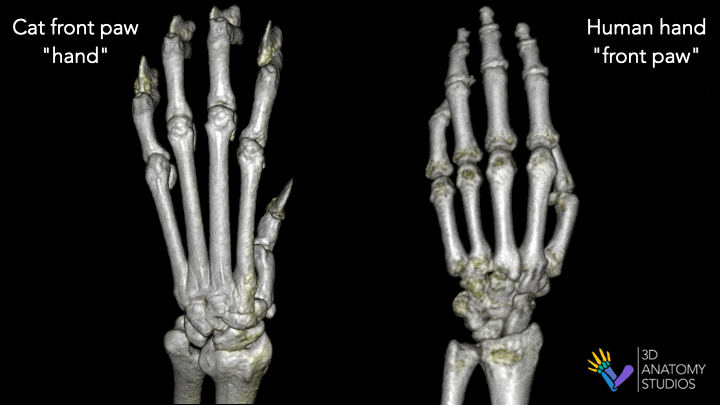Although we call a cat’s front and back feet ”paws,” cats actually have hands and feet just like us. The front paw (“hand”) of cats has five fingers (though polydactyl cats have more than five) and all the other bones that you have in your own hands, just in different shapes and sizes. This may be surprising because externally, a cat paw and a human hand look very different. But look beneath the surface of the skin and the skeletal structure is remarkably similar.
This may also be surprising because humans use their front limbs in such a different way from their back limbs. But humans only recently evolved to walk upright on our back limbs (bipedalism) – nearly all other primates walk on four limbs. So our limbs, including the skeletal structure of our hands and feet, are still very similar to those of vertebrates that walk on all four limbs (quadrupeds), like cats. This is known as homology in evolution – a similarity in structure among two or more organisms because they both inherited that structure from a common ancestor.
We created this animation of the skeleton of a cat front paw and human hand to show this surprising homology. To create the animation, we CT scanned a dissection specimen of a cat as a part of a project to CT scan specimens of animals that are commonly used in anatomy courses. Although there are many initiatives to CT scan the diversity of life on Earth and make these available to the public, there are often few if any scans of “common” animals, such as domesticated animals, agricultural animals, and animals used as dissection specimens. We created the animation of the human hand using CT scans made available through the Visible Human Project.
One of the most notable differences between the cat and human hand is that in the cat hand the distal phalanges have evolved into claws. Cat claws and human fingernails both have an outer layer of keratin (which isn’t dense enough to show up in a CT scan). But cat claws also have a bony structure under that layer of keratin that gives added strength to the claw. This is why cat owners should trim their cats claws rather than removing or declawing them. Removing a cats’ claws actually requires amputation of the distal phalanges, a painful and unnecessary procedure. Our tweet featuring this animation was our most popular tweet of 2021, with over 800 retweets and 3,000 likes.
Created by: Aaron Olsen, PhD
Software used: Horos, Quicktime, Keynote
License: CC BY-NC-SA 3D Anatomy Studios


